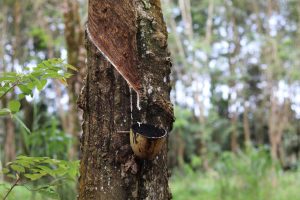Lab-Grown Pearls 2.0: CRISPR-Edited Oysters Producing Geometric Gems
Shimmering, lustrous, and steeped in timeless elegance, pearls have long been coveted as one of the most exquisite gems on earth. For centuries, the only way to obtain these treasures of the sea was through harvesting oysters in their natural habitats. But with the advancement of technology and biotechnology, a new era of pearls is upon us – lab-grown pearls 2.0. And this time, they come with a twist – CRISPR-edited oysters producing geometric gems.
The Origins of Lab-Grown Pearls
The concept of cultivating pearls outside of their natural habitat may seem like a modern innovation, but surprisingly, it dates back to the 1880s. Kokichi Mikimoto, a Japanese entrepreneur, first developed a technique for culturing pearls by inserting a small bead into an oyster’s mantle tissue, which then gradually coats the bead with layers of nacre, the same substance that envelops natural pearls.
Since then, pearl farming has become a thriving industry, producing millions of cultured pearls annually. However, some concerns have been raised about the environmental impact of pearl farming, which involves keeping oysters in confined areas and releasing synthetic inducers into their environments. And this is where lab-grown pearls come into the picture.
What are Lab-Grown Pearls 2.0?
Lab-grown pearls 2.0, or cultured pearls, are created in a controlled environment, mimicking the natural process of pearl formation. But unlike the traditional method, where oysters are induced to produce pearls, cultured pearls are produced by placing small tissue grafts from a donor oyster into a host oyster’s gonad, stimulating the formation of pearls. This process is known as “grafting.”
Despite being referred to as lab-grown, these pearls are not entirely synthetic; they still originate from a living organism, the oyster. Hence, they are often dubbed as ‘living gems.’ But the latest development in lab-grown pearls takes this technology to a whole new level – CRISPR-edited oysters.
The New Frontier – CRISPR-Edited Oysters
CRISPR, which stands for “clustered regularly interspaced short palindromic repeats,” is a revolutionary gene-editing tool that has taken the scientific world by storm. Initially developed as a tool to fight disease-causing mutations in humans, it has now made its way into various industries, including agriculture and fisheries.
The concept behind CRISPR-editing oysters for pearl production is to create genetically modified oysters with enhanced nacre production capabilities. This involves manipulating the oyster’s genes to produce more nacre, resulting in faster and higher quality pearl formation. Scientists have identified specific genes responsible for nacre production, and by using CRISPR, they can precisely target and modify these genes without affecting the oysters’ overall health or behavior.
The Promise of CRISPR-Edited Oysters
The potential benefits of CRISPR-edited oysters for pearl production are unprecedented. One of the most significant advantages is the reduction of the time needed for pearl formation. Traditional methods can take up to four years to produce pearls, while CRISPR-edited oysters can do it in a matter of months, significantly increasing the yield and reducing costs for pearl farmers.
Moreover, there is huge potential for genetic modification to enhance pearl quality, such as producing larger, more lustrous pearls with unique and desirable colors. This could open up new markets and create more opportunities for pearl farmers and consumers alike.
The Future of Lab-Grown Pearls
Laboratory-grown pearls have come a long way since their humble beginnings in the 1880s. From the traditional culturing methods to grafting techniques and now, CRISPR-editing oysters, pearl production has evolved into a sophisticated and intriguing process. With the constant advancements in technology, we are sure to witness even more exciting developments in the world of lab-grown pearls in the future.
In Conclusion
Lab-grown pearls 2.0, or cultured pearls, have taken the gemstone industry by storm. They offer a sustainable and environmentally friendly alternative to traditional pearl farming methods with the potential for even better quality pearls. And with CRISPR-editing oysters on the horizon, the future of lab-grown pearls looks even more promising. So, will these geometric gems be the next must-have in your jewelry collection? Only time will tell.











